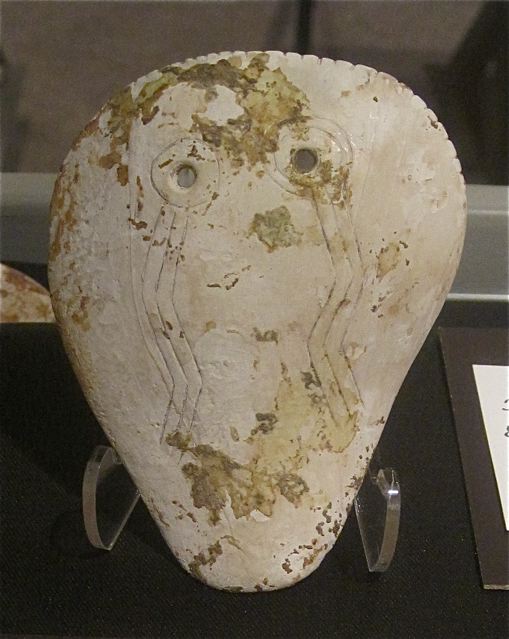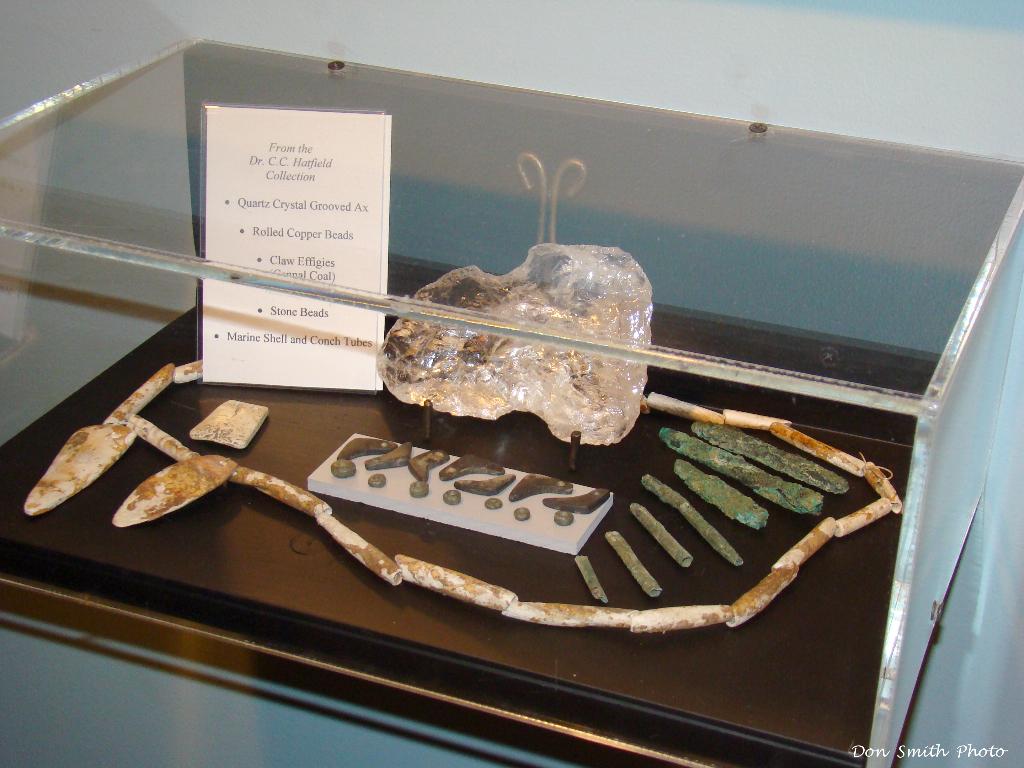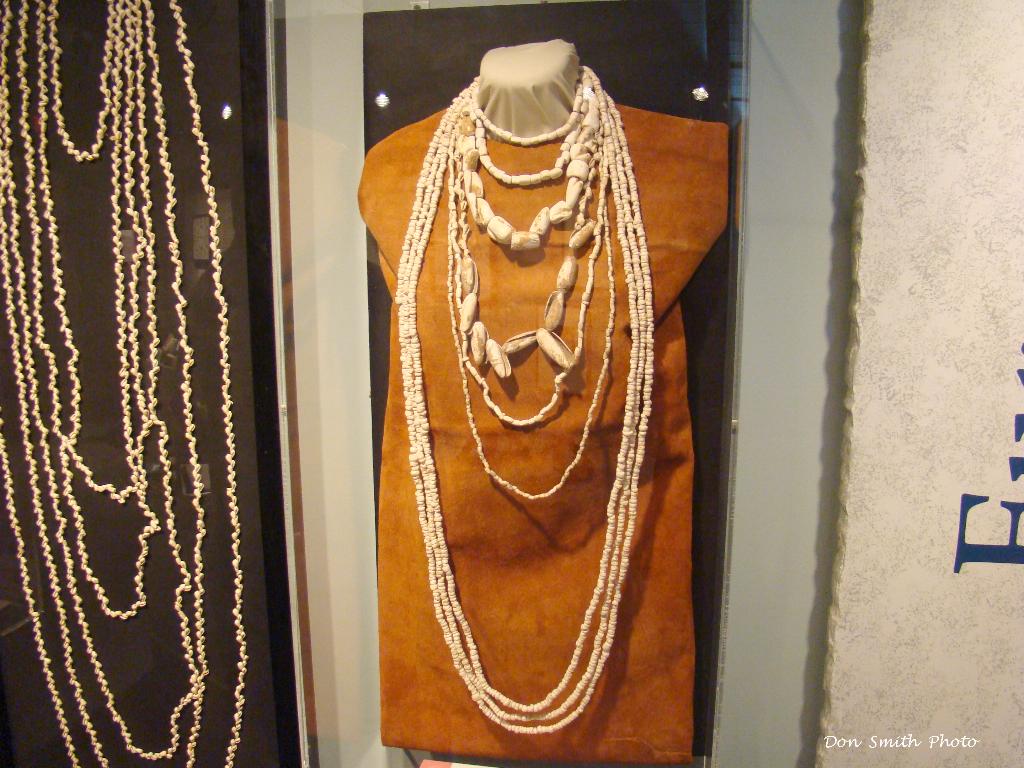Special to Indian Country Today Magazine
Jordan Wright
March 2012
“Saltville can probably claim to be the most fascinating two square miles in Virginia, or possibly the eastern United States, owing to its geology, paleontology, history and past industrial production.” Charles Bartlett, American geologist.
Around Halloween last year when the 2,077 residents of Saltville, VA heard the producers of Animal Planet’s“Finding Bigfoot” were coming to investigate a sasquatch in their midst, phones rang off the hook. The program’s host Matt Moneymaker called for a town hall meeting at the Palmer Grist Mill and anyone who had seen Bigfoot up in the Southern Highlands was asked to bear witness. Moneymaker couldn’t attend in person. He was already up near Gum Hill that night with his infrared cameras in search of the “beast”.
But the small town in a quiet valley has known a great deal more excitement than the random sighting of a mythical creature. In a place where the bizarre presence of mallards and Canada geese paddling lazily in salt ponds in the middle of the Blue Ridge Mountains is commonplace, the unexpected is, well,ordinary.
Saltville’s inhabitants have always lived at the crossroads of history because of salt. The quest for the coveted mineral lured prehistoric animals and hunters. Tribes from the region used it for trade and later industrialists made fortunes selling it to the nation. Salt’s powerful influence held sway during the Civil War when Union forces fought a 36-hour battle to capture Saltville and destroy its crucial saltworks. It is not a simple story to tell. It’s a story of war and survival, but also of power and prosperity.
Despite what is found in most American schoolbooks, our early history did not begin with the emergence of the dinosaur and miraculously pop back up with the British landing at Plymouth Rock. Aboriginal people migrated down the continent from Alaska and up from Florida, the Caribbean and Mexico to arrive in this wilderness. In the area of Saltville Paleo-Indians dwelt along the Clinch and Holston rivers in Southwestern Virginia and on across the mountains and valleys into the adjoining territories of what is now known as North Carolina, Kentucky and Tennessee.
In the Pleistocene Age Saltville was a convergent point for prehistoric creatures like the great woolly mammoth, elephant-size ground sloths and hulking mastodons, who came in search of water and salt deposits for their survival. Over millennia these migrating herds carved permanent trails in the earth. Of six major Indian trails in Virginia three are found leading to Saltville, tracing the well-established paths of the animals that came before them.
Author, archaeologist and professor emeritus at UCal Santa Barbara, Brian Fagan, lists the Saltville area as one of the six worldwide sites of earliest human activity and a known concentration of pre-Clovis spear points made by Ice Age hunters. The discovery of a tool-like bone fragment in the area, made by humans and found beside a mastodon, is evidence of its slaughter by prehistoric man.
For today’s visitor to Saltville, eight miles off I-81 in Smyth County Virginia, a compelling resource helps connect the dots. Chronicling the area’s complex history in a comprehensive timeline, The Museum of the Middle Appalachians is a mecca for archaeologists, paleontologists, historians and the curious.

Paint Lick Mountain pictograph taken in nearby Tazewell County - Photo reproduction by John C. Fisher (Museum of the Middle Appalachians)
The museum houses thousands of artifacts and archival photographs from the area dating from 14,500 years ago to the present and visitors are greeted with a breathtaking full-size replica of a mastodon skeleton and the jaw of a woolly mammoth. Mineral displays from geologic formations of the Late Ice Age show the earliest evidence of human activity in Eastern America.
The museum begins its American Indian displays in the Late Woodland Period (900 – 1600 BC) when the Chisca, also known as Yuchi, lived beside the nearby Holston River, which they called ‘Hogoheegee’ and their village ‘Maniatique’ where they established salt-powered chiefdoms and traded the precious commodity with tribes along the eastern US. Museum manager, Harry Haynes, says, “There have been more than 20 native village sites found along the Clinch and Holton Rivers within 20 miles of Saltville.”

Mask gorget in the Weeping Eye style from the Museum of the Middle Appalachians- photo by Jordan Wright
Clay pots, celts, copper and shell beads, including an astonishing 164-inch necklace of marginella beads make up a small part of the extensive Patricia Bass Collection. Mastodon bones, a beautiful quartz crystal grooved axe, and javelin points are other intriguing objects that have been unearthed in the area. Here a giant slothfootprint shares space with rare engraved gorgets, a type of medallion or mask with rattlesnake or turkey designs that were carved from marine shells.
Photographs of cliff walls at nearby Paint Lick Mountain show early pictographs of bird, man and snail. Further testament to Native American skill and craftsmanship, are drawers filled with axes, celtsand arrowheads and a rare platform pipe of steatite, highly characteristic of the region.
Since 1782 when Arthur Campbell sent a letter to Thomas Jefferson and enclosed a jaw tooth from a mastodon, referring to “bones of an uncommon size”, researchers have been attracted to the region. In 1917 the Carnegie Institute conducted the first official excavations at Saltville, followed by the Smithsonian Institute whose findings beginning in the 1970’s led to the discovery of well-preserved mastodon skeletons and wooly mammothremains in 2007.
Exhibits reflect its later development as a “company town” under the aegis of the Olin Corporation who purchased the Mathieson Alkali Works that had extracted salt there since 1895.
Olin, who continued to harvest salt in the well fields later branched out into chemical production and developed the rocket fuel that took man to the moon. Even today over 23 tons of salt per hour is still produced here and former salt caverns serve as one of the nation’s largest storage facilities for natural gas. The town’s slogan “Preserving history for over 30,000 years from the Ice Age to the Space Age” neatly sums up its dramatic history.
In the 16th century Spanish conquistadors came searching for a mythical chimera other than the ‘sasquatch’. Archives reveal that in 1541 two outriders first set foot in Saltville in search of precious metals and a legendary kingdom of great wealth called ‘Chicora’. Diaries detail encounters with friendly Indians, but reports state that no gold or silver was found. This well documented meeting with the Chiscas was long before Captain John Smith set foot in Jamestown in 1607, and decades before Pocahontas was born.
Chemist and professor emeritus from Virginia Tech, Jim Glanville, explains, “The presence of Native Americans in Saltville is the earliest recorded in Virginia’s history. It is well chronicled in Spain’s archives through letters, testimony and diaries. A 1584 petition to King Carlos V of Spain by a Spanish soldier named Domingo De Leon tells of the bloody incursion and destruction of the village of Maniatique by a Spanish sergeant named Hernando Moyano in April of 1567 under orders from the explorer Juan Pardo and,” he emphasizes, cheerfully upsetting colonial historians’ apple cart, “that was forty years before the British landed at Jamestown.” By the time English-speaking settlers reached Saltville 175 years later all the local tribes were gone.
Glanville’s research, prompted by a Google search, pieces together evidence that, “the first Native American woman to be named in Virginia was not Pocahontas [as is commonly accepted] but Luisa Menendez, a resident of Saltville, who as a teenager married a Spaniard and later testified to the Spanish governor in St. Augustine, Florida her knowledge of the destruction of Maniatique.”
Saltville has many remarkable stories to tell along with mysteries and ancient artifacts yet to be revealed. During my stay I stopped along the town’s salt ponds to get directions from a boy and his friend out for a leisurely day of fishing. We spoke for a while of the many artifacts housed in the museum. He assured me that many more are still found close to town. He knew for a fact, he said, because whenever he needs pocket change he goes out and digs them up. Just remember if you decide to go fossil hunting on Gum Hill, keep your eyes wide open. You may catch a glimpse of the elusive bigfoot staking his claim as Saltville’s next chapter in history.
Where to stay
The historic General Francis Marion Hotel is a beautifully restored 80-year old grand hotel in nearby Marion. Complimentary continental breakfast. Lunch and dinner served in the hotel’s Black Rooster restaurant. www.gfm.com
Where to Eat
The Town House in Chilhowie serves upscale, locally sourced American Modern cuisine just off I-81 on the way to Saltville. Open for dinner only. Reservations highly recommended. www.townhouseva.com
In Marion the charming Handsome Molly’s Bistro and Small Wine Shop across from the hotel serves soups, salads, paninis and pizza.
In the area
The Museum of the Middle Appalachians, Saltville. Noted paleontologist Dr. Blaine Schubert of Eastern Tennessee State University conducts archaeological digs open to the public in summer. Visit www.museum-mid-app.org for dig opportunities and museum hours.
Saltville is on Virginia’s Crooked Road music trail and Friday nights are for old time bluegrass and gospel music. From 7 – 10 pm at the Allison Gap Ruritan & Community Center.
The Lincoln Theatre in Marion is one of only three Art Deco Mayan Revival theatres in the country. The $1.8 million dollar renovation has placed it on The National Register of Historic Places. For a schedule of events visit www.thelincoln.org
ICTMN magazine article – Click Here http://indiancountrytodaymedianetwork.com/2012/02/12/the-most-fascinating-two-square-miles-in-the-eastern-united-states-95733







Leave a Reply